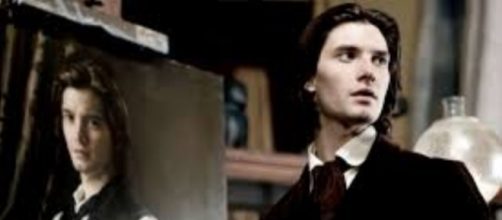In the works in movie land is a remake of the “Picture of Dorian Gray,” a 1945 film based on Oscar Wilde’s novel about the glories of hedonism in the Victorian Age. And for the first time, a woman will play the lead (Isabel Huppert) as the handsome Dorian. A female hedonist isn’t all that remarkable. Femme fatales date back to Aphrodite, the ancient Greek goddess of beauty and wantonness. There’s a matter of greater consequence in this movie than the gender switch – a message inherent in Wilde’s tragic tale tailor-made for modern audiences.
Oh, oh, ageism!
Wilde extolled the virtues of youth, beauty, and narcissism -- ambitions that drive contemporary culture. Our world is full of Dorians, men and women alike, hell-bent on self-indulgence and instant gratification. The remaking of the movie may unwittingly prove to be the ultimate morality play of the 21st century. When Dorian is told that his life isn’t worth much when his salad days end, he becomes fearful of aging. That same fear impels plastic surgeries and other artifices that push back fading youth in our time.
Wishful thinking
The “picture” in the movie title is a life-size portrait of Dorian that captures him in the springtime of his life. Fretting that he’ll lose his looks, he tells the painter that he is jealous of the portrait because it will stay beautiful while he won’t.
When he wishes the painting to reflect his decline instead of him, he gets his wish. Hopefully today’s audiences will spot the fallacies in Wilde’s thinking. For one thing, he equates art with beauty. If art is life, it can’t always escape the cruelties of the world. He emphasizes one’s appearance by saying through one of his characters, “It is only shallow people who do no judge by appearances. The true mystery of the world is the visible not the invisible.” What of our hearts and minds, Oscar – our dreams, our nightmares?
Bad dream
Consider Lucien Freud’s portrait of Queen Elizabeth in her dotage -- wrinkled and sagging – Dorian’s worst nightmare. Reactions to the painting sound like something Wilde would say.
The Queen “is no longer the heart-breakingly beautiful young woman she was,” said the Daily Telegraph. Art critic Richard Morrison of The Times complained that she looked like a sovereign who suffered a lot of horror. And royal photographer Arthur Edwards said that Freud should be locked in the Tower.
Art as truth
And the hits kept coming. The editor of the British Art Journal, Robert Simon, suggested that Freud’s painting of the Queen made her look like one of her corgis. But some critics, unencumbered by the Wilde credo, saw the painting differently. Richard Cork, art critic of The Times, called the portrait “painful, brave, honest, stoical...” And Adrian Searle, art critic for the Guardian, crowned the likeness of Elizabeth as an old woman the best royal portrait in 150 years: “Portraiture is meant to get beneath the skin.” He said. Dorian’s picture, then, is no portrait.


